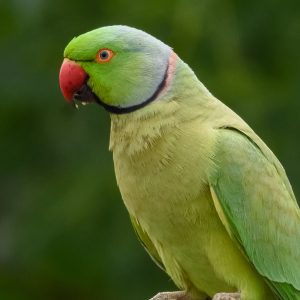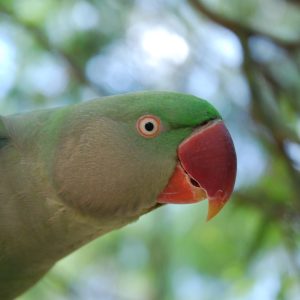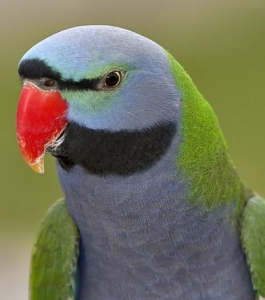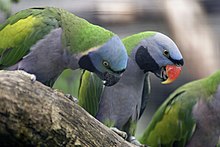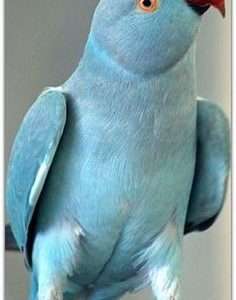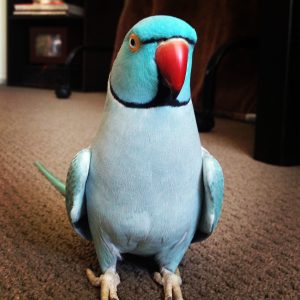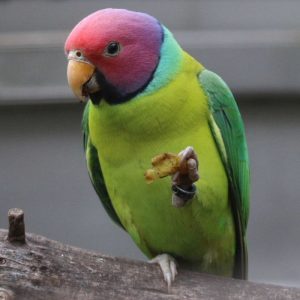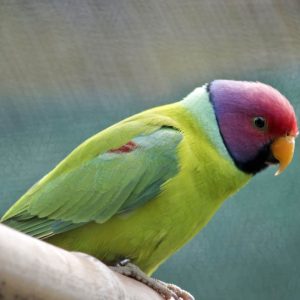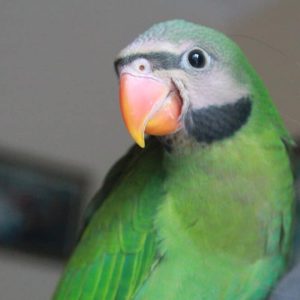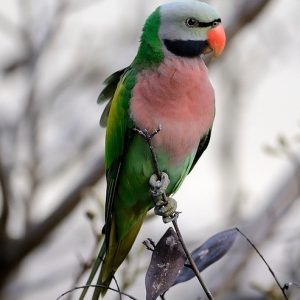Buy Asiatic Parrots Online
Asiatic parrots are a group of parakeet species found throughout the southern parts of of Asia. They were among the first parrots to be kept as pets, with a talking plum-headed parakeet first documented in 397 BC — over 2,400 years ago! Asiatic species were also among the first to be captured for the “pet trade,” frequently being kept by wealthy families in the ancient Roman empire.
Today, Asiatics are one of the most popular group of parrots in the pet trade, rivaled only by Australia’s cockatiels and budgerigars. The Indian ringneck—the most commonly kept Asiatic—is cheaply and readily available throughout the world, and hundreds of colour mutations have been developed.
Commonly Kept Asiatic Species
The Indian ringneck parrot, Alexandrine parrot, and plum-headed parakeet are the most commonly kept Asiatic parrot species in aviculture. They can generally be acquired as aviary birds or hand-raised pets.
Derbyan parakeets, mustache parakeets, slaty-headed and blossom-headed parakeets, and Malabar parakeets are also frequently kept, though they are less common and usually kept by more experienced hobbyists.
Dietary and Housing Requirements
In the wild, Asiatic parrots generally gather in large flocks and feed among the lush canopy of subtropical forests. Subsequently, they tend to be quite social and gregarious, requiring large amounts of attention from their owner or an aviary with a mating partner. Their territoriality and aggression to birds outside of their family unit makes colony breeding difficult.
They require a diet that includes a lot of fruits, berries, nuts and flowers; as this foods are abundant in their natural environment. They will not do as well on a seed-based diet as other parrots from drier habitats, such as inland Australia. They tend to particularly enjoy sweeter tropical fruits such as mango and papaya. Chillies are also very readily consumed—their taste buds aren’t sensitive to spice so they’ll happily eat the hottest chillies you can find.
Hybridization Risks
Producing hybrids by cross-breeding different species of birds should be avoided. Almost all of the species mentioned in this article can interbreed if housed together or in adjoining aviaries where contact is possible. In captivity, most Asiatics do best in single-pair aviaries.
Closing Thoughts
Asiatics are a fantastic group of birds. They’re very slick-looking birds that always seem to maintain perfect feather condition, they tend to tolerate temperature extremes quite well (their natural range includes hot tropical forests and the frosty Himalayas), and they are wonderfully intelligent and inquisitive.
They are a little more demanding in attention, exercise, and dietary variation than similar-sized parrots from other regions, so they’re only viable to keepers with larger aviaries and a little extra time.
Asiatic Parrots
Asiatic Parrots
Asiatic Parrots
Asiatic Parrots
Asiatic Parrots


